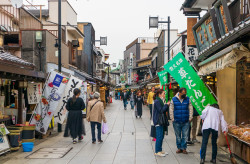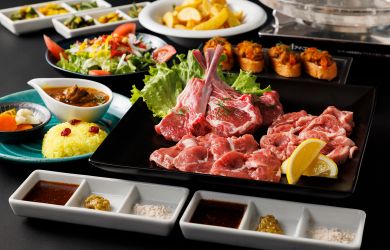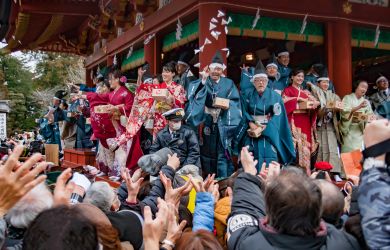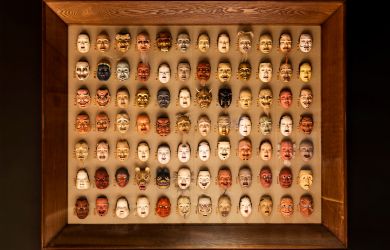
Originally published on metropolis.co.jp on April 2009

Courtesy of Jackpot Planning
On a recent Friday night, Gomaya was at close to capacity—so much so that the only remaining seat was a three-person (so the staff claimed) koshitsu that was a snug fit even for our group of two.
In typical izakaya fashion, the menu at Gomaya is filled with lots of small, shareable dishes, each with an extra twist. Take the restaurant’s signature item, goma mametomi (¥500): a rich, sesame-flavored tofu with such a light sweetness that it could almost be a dessert. The obligatory fried egg dish is here represented by a juicy dashimaki tamago with white sesame and crab (¥600).
In addition to the usual range of nihonshu, shochu, sours and other cocktails, the drink menu has several sesame-inspired offerings. We were intrigued by the goma-infused umeshu (¥550), but in the end decided to order a glass of Goma-roku shochu (¥380). The flavoring was subtle enough not to be blatantly sesame, but its presence gave the liquor a welcome kick.
Even the non-sesame dishes offer an inventive take on standard izakaya fare. While chicken kara-age (¥800) is available, a better fried option is the surprisingly tender tuna rib tatsuta-age (¥680), which comes with grated daikon and ponzu. Steamed manju gyoza are a bargain at ¥250 each, especially since they come stuffed with chunks of shrimp and plenty of fresh nira—it’s no surprise to learn they’re the restaurant’s second most popular item. Thick, skin-on fried potatoes flavored with garlic and cheese (¥500) are also leagues above the average.
Aside from the diminutive size of our booth, the evening passed with only two low notes. Our order of oyster and uni pasta (¥1,000) still had not arrived by last call. This small hiccup was no great loss, since by that time we had decided to order dessert instead. Yet the “parfait-like black-and-white goma ice cream” (¥450), though suitably tasty, came with a sprinkling of cornflakes that we could have done without. In retrospect, perhaps the sesame crème brûlée (¥500) would have been a better choice.
Affordable izakaya fare is easy to find in Tokyo, but the quality of Gomaya’s cuisine sets it apart. Despite the fullness of our bellies, when we finally stumbled out, there were still several dishes we wanted to try. Perhaps next time we’d visit one of the other two locations, in Shibuya and Shinjuku-sanchome.







